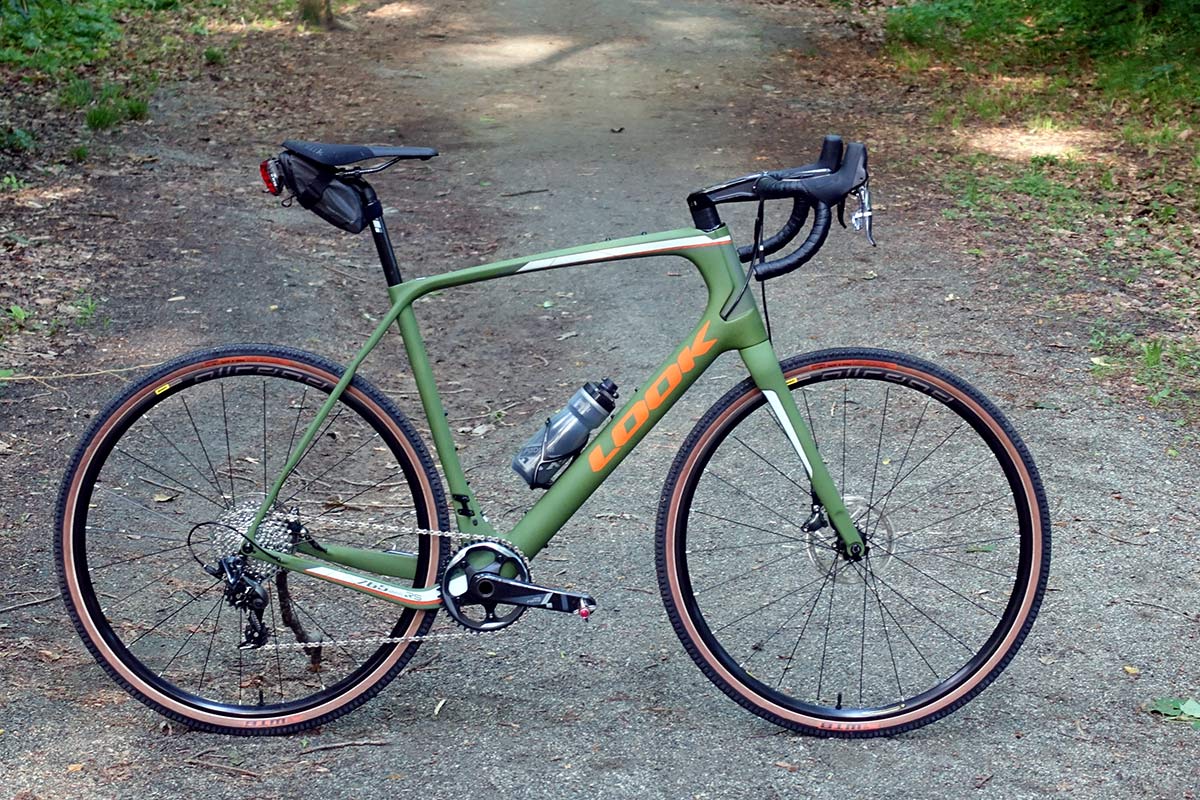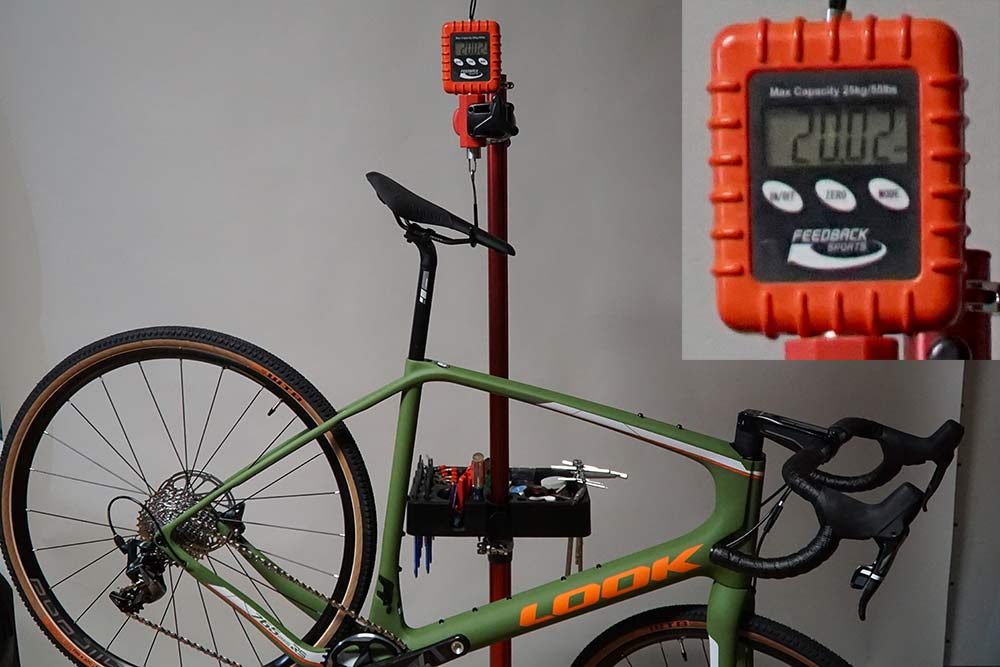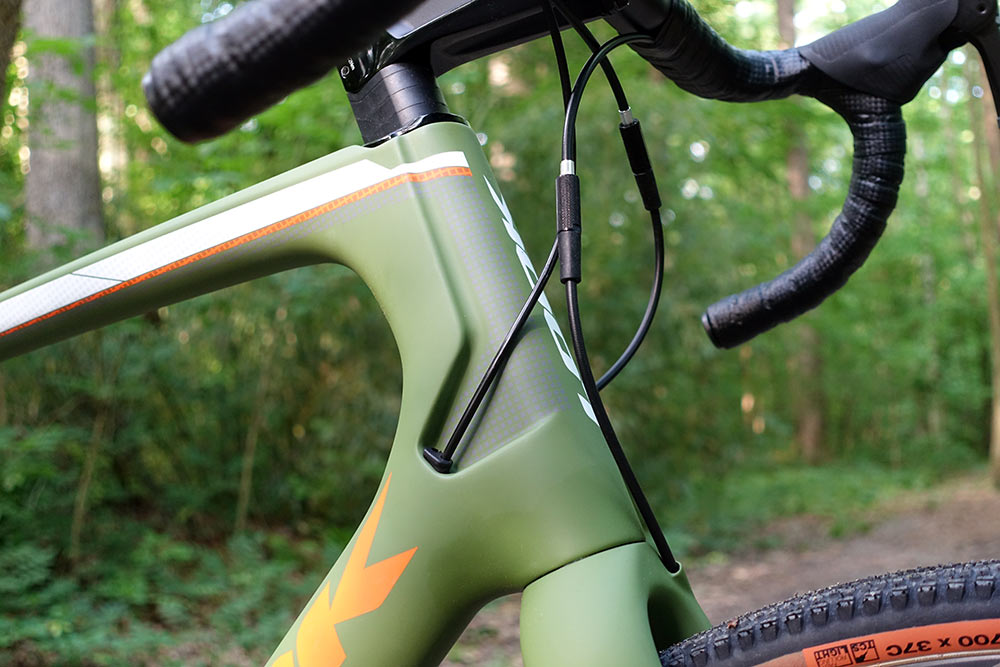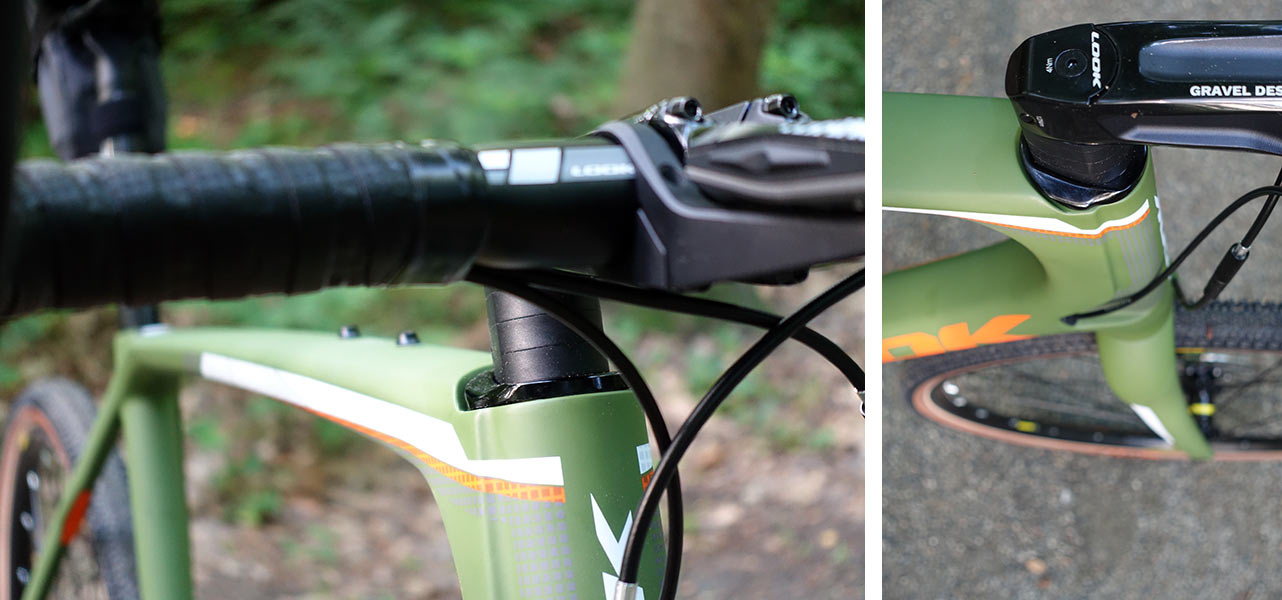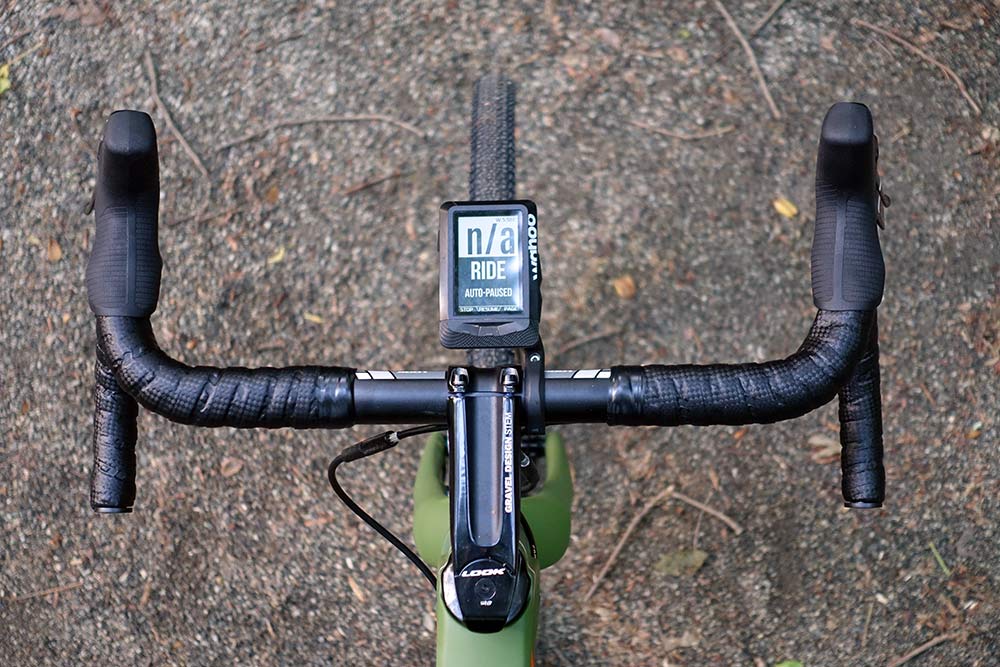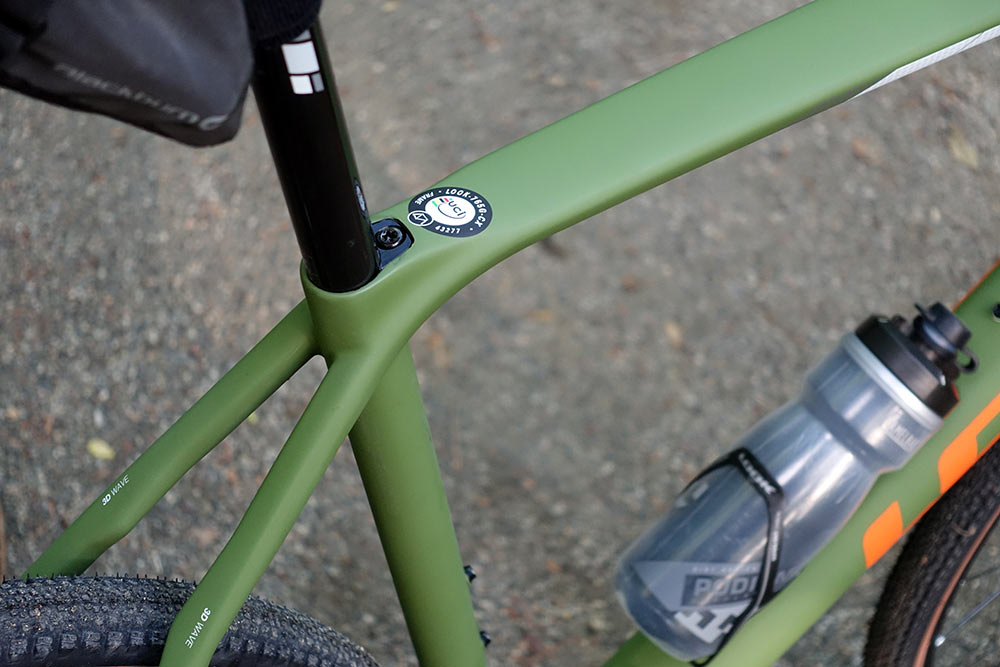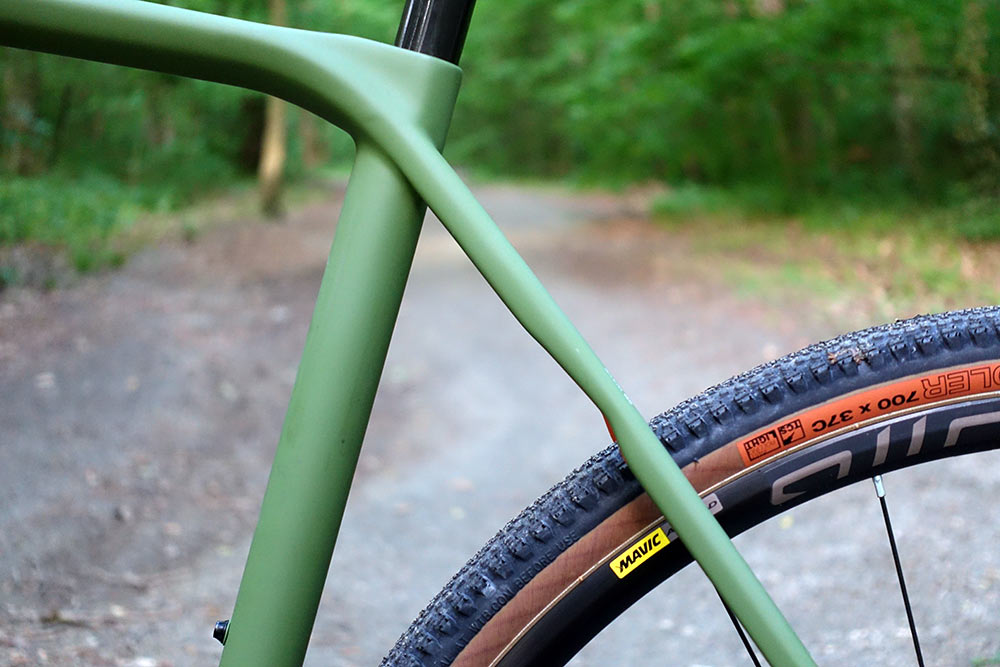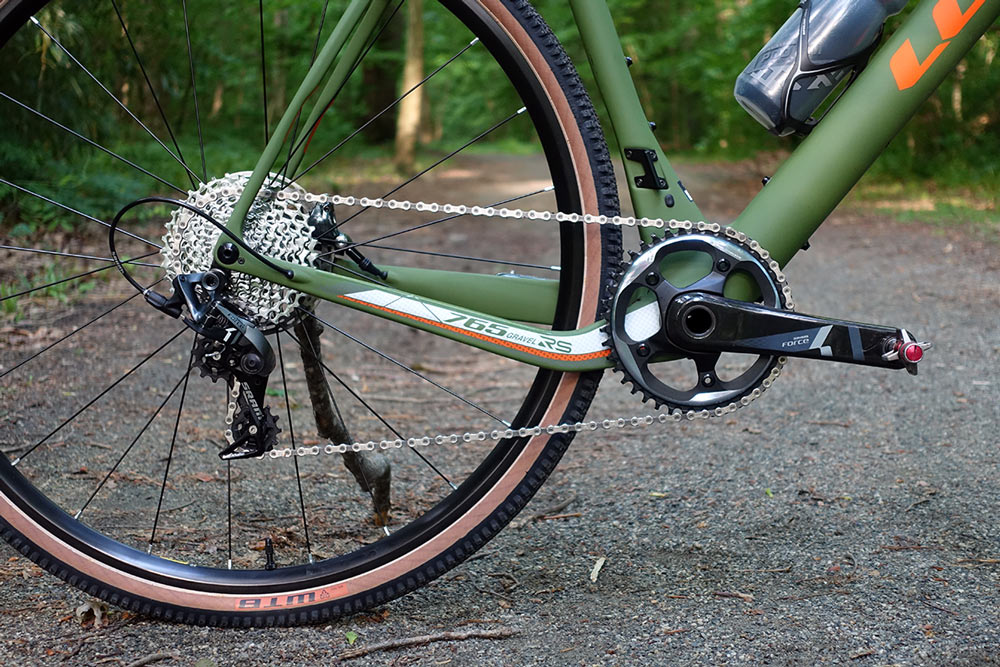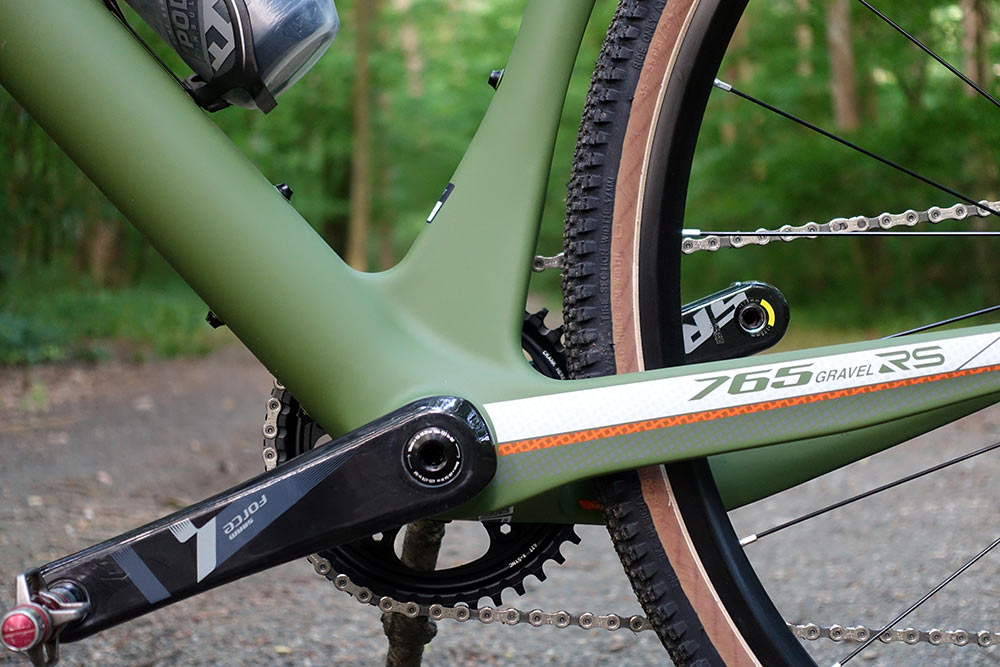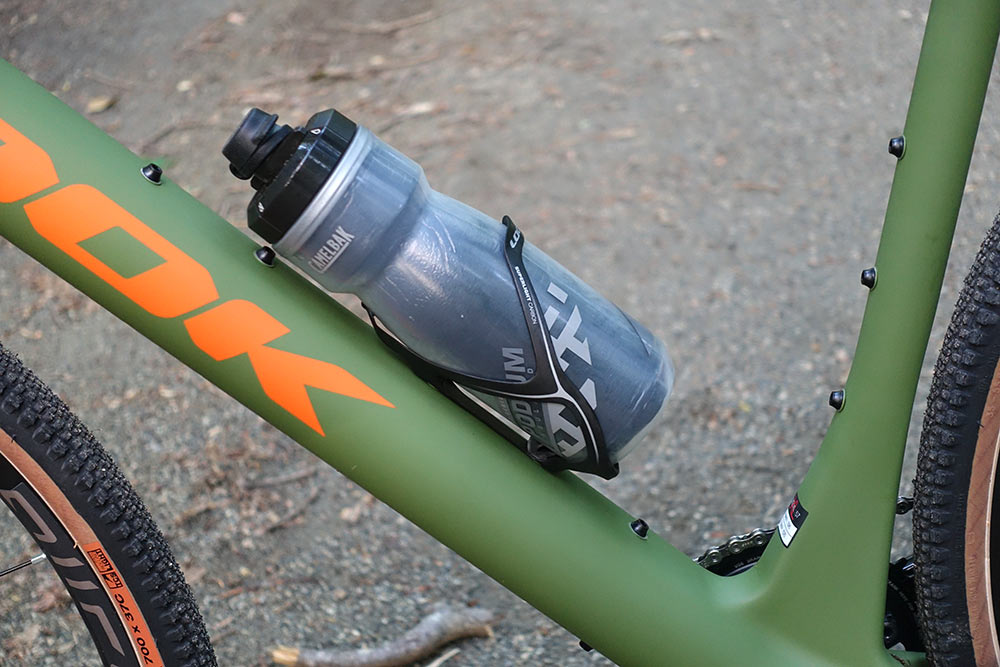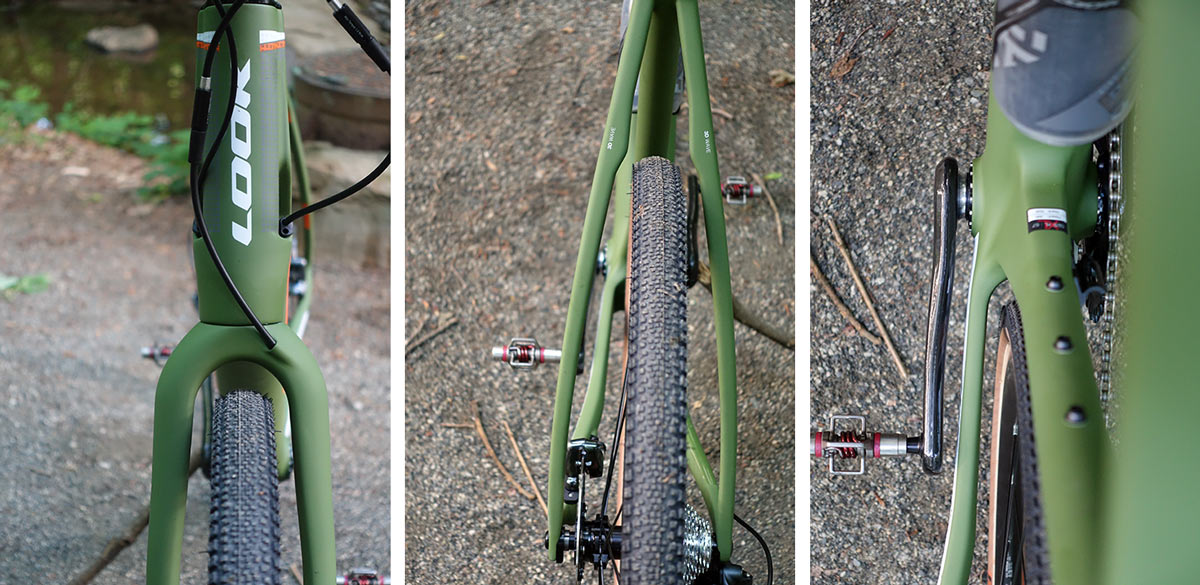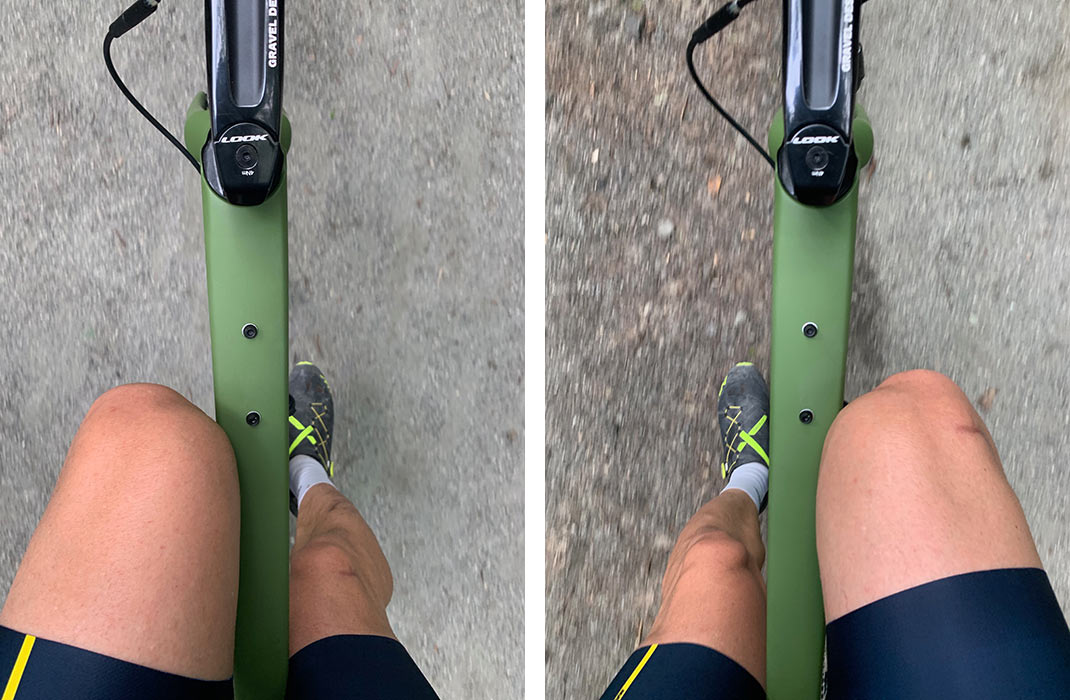When the Look 765 Gravel RS debuted, it was behind glass, and no one wanted to talk much about it. Until they did, which was a great relief to us because that first glance had us fighting over who’d get to ride it first. Look’s aesthetic has always been a bit divisive, but their first gravel bike seems to strike the right balance between tradition and their shapely integrations. And oh boy does it ride well…
Look 765 Gravel RS actual weight & geo
We tested the size XL with the Force 1×11 group, which includes a Look alloy cockpit plus carbon seatpost, Mavic Allroad tubeless wheels, and WTB Riddler 700×37 tires. Weight for the complete bike without pedals was 20.02lb (9.08kg). Also on offer are two Shimano 2×11 builds, check this post for the geo chart and options. They also offer the e-765 Gravel RS model with motor assist.
Look 765 Gravel RS ride review & frame tech
Perhaps its the XL’s stature that gives this bike such an imposing presence, but that height is supported by a massively oversized head tube, thick top tube and robust down tube. In fact, the whole front triangle of this bike is larger than life, which lends it a bomb-proof feeling when racing over rough terrain. Washboards, roots and rocks can’t shake it. They shook me, but the bike was unfazed.
Look uses a lot of shaping to add structure, too, as well as aesthetics built around the features. Indents let them run straight cable entry points, keeping things from flaring out.
Even the headset cap is shaped to match, as are the headset spacers.
Shaping on the fork legs design flex into them, which helps tame rough ground…but note the disparity in girth compared to that downtube!
Look’s alloy stem was a bit long for my preference, but it too was shaped to blend in with the bike. If the bike were mine, I’d swap out for a more ergonomic carbon handlebar with a bit of flare on the drops. The SRAM Force 1 group was, as usual, flawless.
Thankfully, Look sticks with a standard stem/steerer and seatpost/seat tube interface, letting you swap things out easily. Their carbon seatpost was standard, but fine, and it’s 27.2, which is great for muting bumps…
…especially when combined with these flattened, shaped seatstays. Called 3D Wave, the design intentionally mutes vertical inputs to keep you more comfortable and the rear tire planted.
It all works as intended…I felt unstoppable on this bike. The front end feels strong and confident, and the rear end tracks well. This is one of my favorite gravel bikes I’ve ridden, and if it weren’t for limitations on garage space, I’d have tried to keep it longer.
Love it or hate it, dropped chainstays add tire and chainstay clearance. Note the small indent on the lower part of the seatstays, too, which is part of that engineered flex design.
The smooth lines help hide just how big the BB section is. Nothing is lost to frame flex here.
Need more water? Five mounting bolts on the inside of the downtube, one on the bottom of it, and three on the seat tube let you add a ton of storage. And the top tube has a two-bolt bento box mounting point. Which is good, because the fork legs and stays don’t have any.
While it comes with 700×37, there’s room for more (up to 40mm claimed) in there. Or 650B x 2.1″ wheels and tires.
My only complaint with the bike is knee contact on the top tube. I’m exaggerating it a bit in these photos, but the top tube is wiiiide. So, if your knees typically rub on the top tube when pedaling, they’re gonna do it more on this bike.
The “RS” in this bike’s name means “Racing Sport”, and it fits. There’s no accommodations for fenders or racks, only the essentials for long races like The Rift or Grinduro. The big front end put me in a commanding position that could get racier by removing the spacers, making it a great all-day bike that’s ready to race. Simply put, this bike felt unstoppable no matter what I rode through or how I rode through it. Well done, Look.
